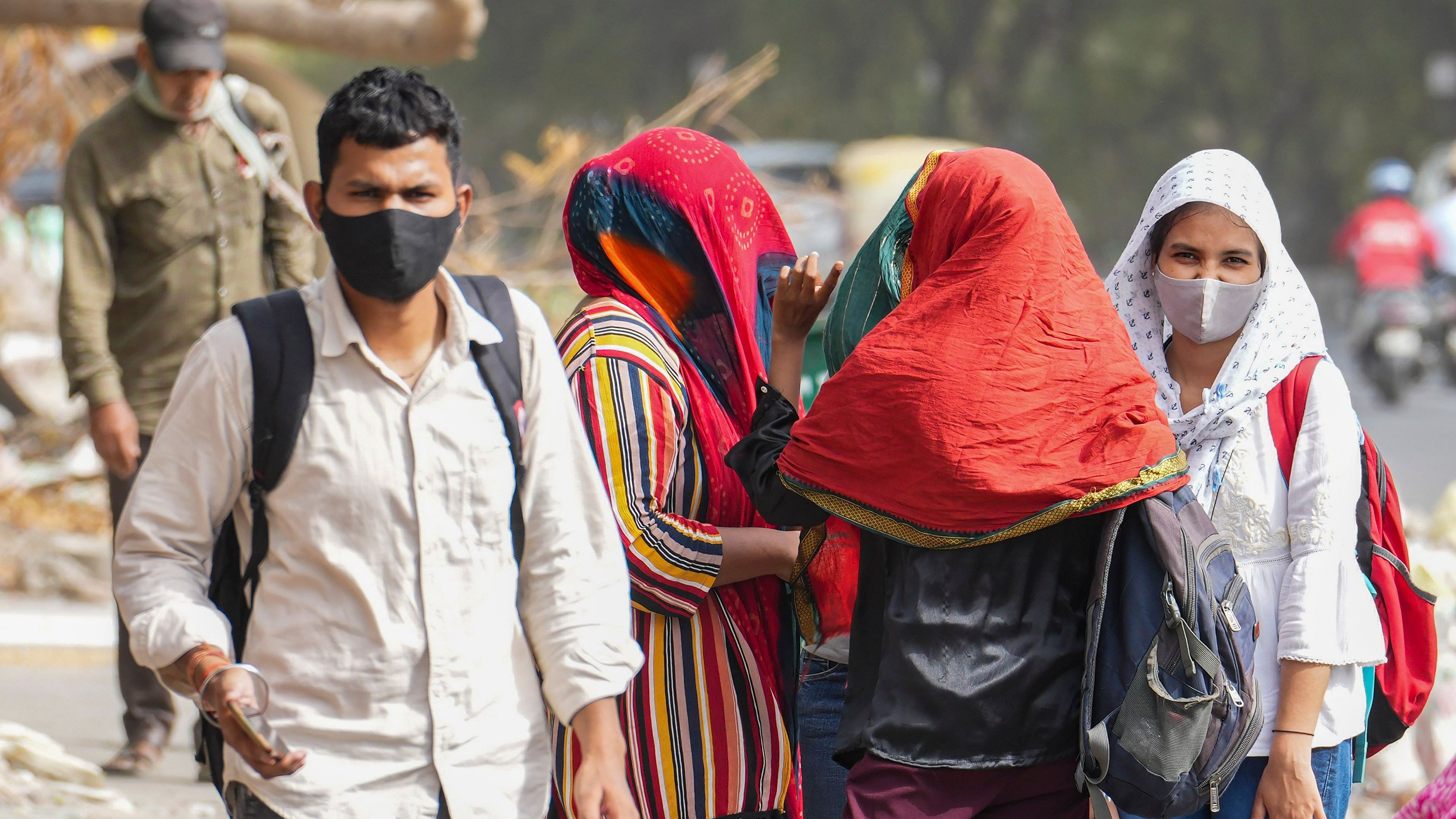
People cover their faces for protection from the scorching heat on a hot summer day, in New Delhi, Tuesday, June 18, 2024.
Credit: PTI Photo
Heat waves have been sweeping the country for more than two months. Besides claiming human lives, they have disrupted the livelihoods of farm workers, labourers, and the vulnerable in a large part of the country. During the one-and-a-half-month-long Lok Sabha elections, polling officials, organisers, politicians, and the public faced significant hardships. Hopefully, the Election Commission of India has learned from this and will avoid scheduling elections in the summer in the future.
Rising temperatures and the subsequent increase in humidity have had deadly effects on the population. Temperatures above 45 degrees Celsius are dangerous for living beings, and those above 55 degrees Celsius are unlivable. The extreme heat has taken a toll on humans, livestock, and both domestic and wild animals. It has also become unbearable for the workforce, often leading to the suspension of work during peak hours from 11 am to 3 pm. The HSBC India Services Business Activity Index suggests that the intense heat waves halted the service sector’s expansion in May 2024.
Air-conditioning has become a necessity for those staying indoors, leading to a record power consumption of 250 gigawatts in May. This surge in power results in more fossil fuel burning, increased greenhouse gas emissions, and further temperature rises. It is clear that countries must step up their efforts to meet their pledges under the Paris Climate Accord and transition to renewable energy.
Although countries have pledged to achieve net zero by 2050, the demand for air conditioning is likely to increase 20-fold by that time. If most of this energy comes from coal, we are stuck in a vicious cycle, making global warming unstoppable. However, in a warming world, limiting the use of air conditioning is not feasible. Here are some recommended measures:
1. Promote power-efficient appliances: Scientific
advancements have led to more power-efficient appliances, including air conditioners. Local bodies should regulate sellers and buyers to ensure inefficient ones
are discarded.
2. Develop integrated heating and cooling systems: Cities and towns should implement integrated heating and cooling systems to protect lives and livelihoods. Centralised cooling systems for residential and business buildings can be developed using cool water pipes at various heights to absorb heat and keep buildings cool. While this arrangement may not be effective in high-humidity coastal areas, it would be efficient elsewhere and more cost-effective than centralised air conditioning.
3. Increasing tree cover and maintaining green spaces: Increasing tree cover and developing lakes and parks are essential. Studies show that tree cover and water bodies have the potential to bring down the temperature of the surrounding area by up to 4 degrees Celsius. Urban local bodies must rejuvenate lakes and take up tree planting with native species on all degraded and vacant lands. The role of the State Forest Department in increasing tree cover in the landscape can make the area cool during a heat wave. The Forest Survey of India publishes a biannual report on the status of tree cover in the country. The last report came on December 31, 2021, and another report was expected on the last day of 2023, but it has not come so far. Though tree planting is going on under compensatory afforestation funds and many other schemes, there are hardly any studies available in the public domain on the evaluation and monitoring of these planting programmes. We are not sure whether the plantations are successful. Heat waves can certainly impact the survival percentage of seedlings and saplings and can aggravate forest fires. Forest fires in Uttarakhand in turn melt Himalayan glaciers and bring irreversible changes in the climate.
4. Improve drainage system to handle heavy rainfall: Cyclone ‘Remal’ in the Bay of Bengal recently wrecked havoc in the north-eastern states of Manipur, Tripura, Mizoram, and Meghalaya, and the flooding and landslides have claimed hundreds of lives and damaged properties and public infrastructure worth thousands of crores of rupees. It has advanced the arrival of the monsoon by two days, and heat wave conditions are now localised to north and north-west India. A rise in temperature leads to higher evaporation from sea surfaces, and a higher quantity of moisture is deposited above the land masses, leading to incessant downpours. Heavy rains for a few hours can flood towns and cities, and citizens get caught unaware. Storm water drains in metropolitan cities are designed to take a load of 25 mm of rain in an hour. Mahanagarpalikas and local bodies must remodel their drainage network to take the load of 100 mm of rain per hour. Residential buildings should have underground sumps to store rainwater, which helps in the quick disposal of water from flooded areas.
(The writer is a retired principal chief conservator of forests (Head of Forest Force), Karnataka)